Mirza Saad Sharif Ahmad, UK
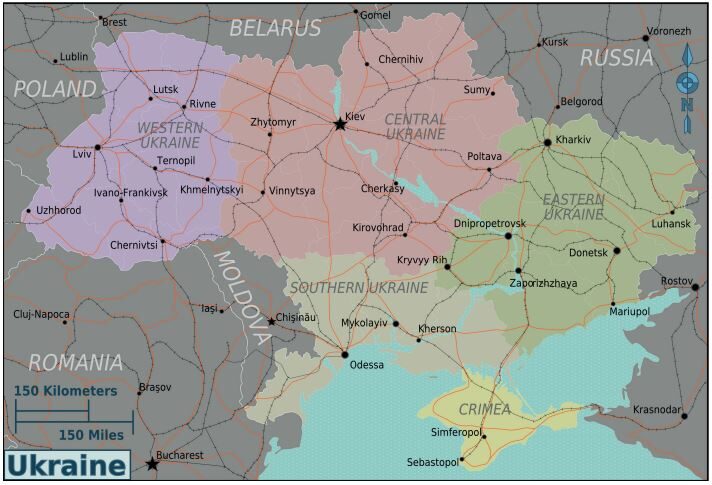
The Russo-Ukrainian War has brought the world to the brink of disaster. Although in the weeks leading up to this, many warned about an imminent invasion, the shock was felt around the world. Not just those directly involved have been affected, but financial markets around the world have also reacted negatively to this event. A UN report recently described how the price spikes of food caused by the invasion may push over 40 million people into extreme poverty.
The chances of escalation too are very high, with fears that this may turn into a wider European, and indeed a Third World War. With many politicians and news agencies across the globe calling this an “unprovoked” attack, it is necessary to first understand the reasons behind why this has happened, and to understand the historical relationship between the two countries.
Ukraine and Crimea
The modern state of Ukraine was created in the 1990s, after the breakup of the Soviet Union, alongside 14 other new countries.
One territory that was part of Ukraine from the beginning was Crimea in the south. Crimea is almost like an island, and only connected to mainland Ukraine through a small land border, with a large part of this being salty marshland.
In 2014, Russia annexed Crimea, as the local population held a referendum that resulted unanimously in favour of joining Russia. But the actual reason why Crimea was annexed by Russia was due to the internal politics of Ukraine – and a new government.
Before the Russian annexation of Crimea, there was an uprising in Ukraine in February. The democratically elected leader and the Ukrainian President at the time, Victor Yanukovich was overthrown as a result of the Maidan Revolution. This was following the Euromaidan Protests, which were a series of protests that included some of the most violent days seen in the country since the breakup of the Soviet Union.
The main cause of this uprising was due to what had happened the previous year in 2013, and involved an agreement with European countries that President Yanukovich was due to sign. But because of Russian pressure, this deal was abandoned. However, one may wonder how not signing a deal can lead to such violent outcomes.
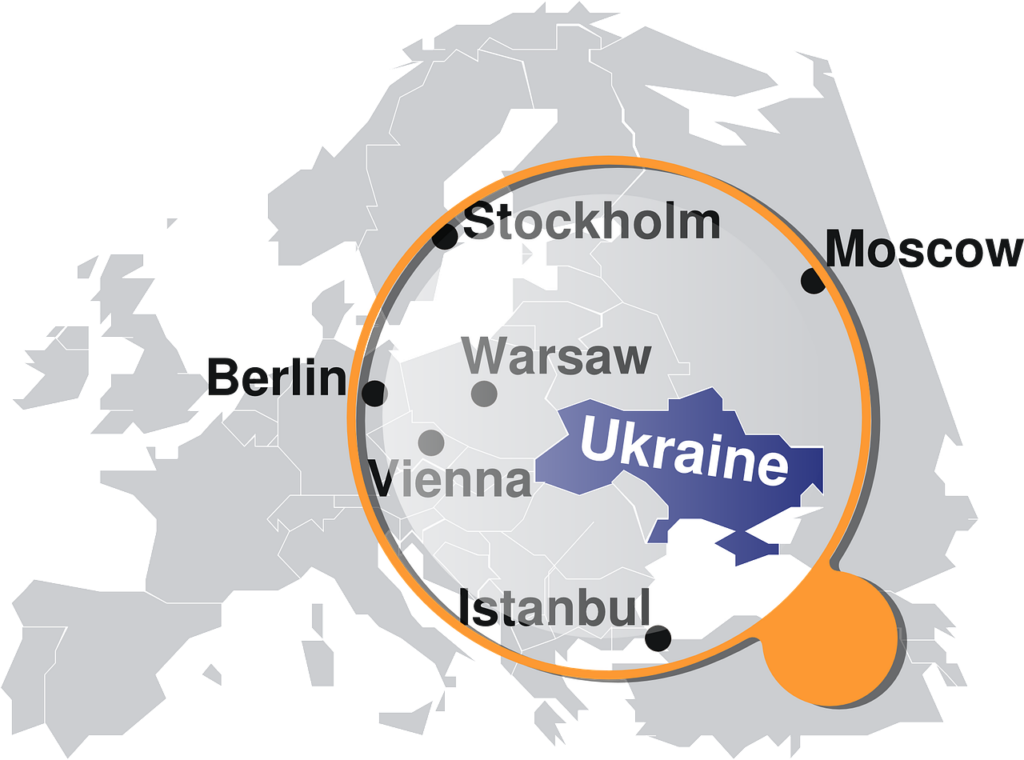
The European Union-Ukraine Association Agreement
Firstly, we need to understand what this deal, named the European Union-Ukraine Association Agreement, actually involved. The Agreement was a deal that enabled Ukraine and Europe to establish even stronger ties with each other – mainly economic, with political advantages as well for both sides.
This deal included Ukraine introducing reforms that insured its financial and judicial policies were similar to those of the EU’s, and the EU agreeing to provide Ukraine with preferential access to EU markets. The deal seemed certain to be signed, but a last-minute refusal to sign this deal by President Yanukovich left Ukrainians in shock.
However, this wasn’t left unsigned without any reason. Russia had in fact offered its own deal which the Ukrainian government had decided to accept. President Putin offered to decrease the price of gas by $132 per 1000 cubic metres, as well as buy $15 billion in Ukrainian Eurobonds. This $15 billion aid package was believed to be vital to Ukraine, with the Ukrainian Prime Minister Mykola Azarov describing it as an historic deal that would boost Ukraine’s economic growth.
Economists mentioned that unless Ukraine received at least $10 billion in the following few years, the country had an extremely high risk of bankruptcy. So from both a political and economic standpoint, the Russian-leaning deal was believed to be better for the country. However, a large number of Ukrainians thought otherwise. This was clear from the outset, as when Mr Yanukovych was travelling to meet President Putin, protesters in Kyiv blocked his route – making it clear what their aims were.
Soon afterwards, these protests escalated dramatically.
Protests in Ukraine
The Euromaidan protests had actually started earlier in November 2013, and the deal with the Russian Government was in fact to try and ease these protests. However, this agreement ended up having the completely opposite effect.
After failing to sign the European-focused agreement, there were large demonstrations throughout Ukraine. In December 2013, protestors occupied Kyiv’s city hall, and demanded that President Yanukovych resign. Seeing what was happening in Ukraine, Russia offered its own deal – which, as we know, was accepted by the Ukrainian President. Thousands of people, most notably leaders of the opposition and other MPs once again took to the streets. However, something that changed the course of Ukrainian history occurred at this point – when the police began to violently disperse protestors.
And this didn’t sit well with many Ukrainians.
In January 2014, these demonstrations in support of a European Ukraine that started off peacefully turned into riots, causing President Yanukovych to sign laws restricting people’s ability to protest. During protests in Kyiv in January, up to 200,000 people were reported to be in attendance on certain days, who denounced these new laws as “Dictatorship Laws”. Two protestors were killed by police on 22 January, following which the rioters broke into Ukraine’s justice ministry, and riots spread to Eastern Ukraine – despite traditionally being known for favouring Russia.
This culminated in rioters effectively taking over the Ukrainian capital, after police snipers fired at them on 20 February. In the following 48 hours, 88 people were killed in the violence. The situation continued to deteriorate until 22 February, when rioters took over presidential buildings, and President Yanukovich fled to Russia. Mr Yanukovich appeared on TV to denounce what had happened as a coup, but this was followed by a new prime minister and president being chosen.
On 28 February, pro-Russian gunmen, taking advantage of what had happened in Ukraine, stormed government buildings in the Crimean capital, Simferopol, and armed men in combat uniforms appeared outside major airports. Moscow, however, insisted that these gunmen were not Russian soldiers.
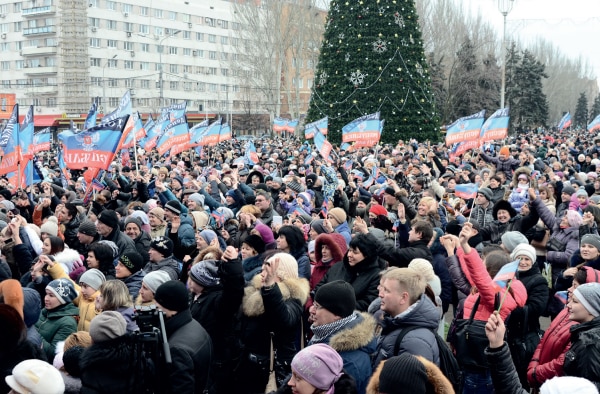
The question of Crimea
On 1 March 2014, the Russian Parliament approved President Putin’s request to use the military in Crimea, following which a referendum was held on the 16th on whether Crimea should become a part of Russia. The result of this referendum, overseen by the military, was that 97% of locals were in favour of accession to Russia.
As international observers weren’t allowed, the referendum was denounced as a “sham” by Western nations.
In response to the Crimean referendum, Russia was kicked out of the G8, and senior Russian officials were sanctioned by the EU. On 18 March, President Putin signed a bill that officially incorporated Crimea into the Russian Federation. Later that month, President Obama urged Russia to lower tensions by removing their soldiers; however, his pleas went unheeded.
Although Ukraine wasn’t able to respond militarily, it was able to cause Moscow a logistical headache by limiting the water supply through the North Crimean Canal.
The North Crimean Canal was from where the Crimean Peninsula received the vast majority of its water. Until 2014, this canal provided Crimea with up to 85% of its water supply. After Russia’s annexation, however, activists built a makeshift dam out of sandbags to try and stop water flow to Crimea, upon which the Ukrainian government built a proper dam that caused the Simferopol reservoir to only be 7% full.
The Ukrainian government has said that it will only allow water to flow freely to Crimea once Russia ends its occupation. This means that Russia must transport water over the Kerch Strait Bridge that connects mainland Russia to the Crimean Peninsula, which has been a cause of huge financial strain over the last few years.
Analysts believe this is one of the main reasons why Russia is now invading Ukraine, as it is believed that Russia may try to push to the Dnipro River – which feeds the canal. Taking control over the dam would make life much easier, for both those who live in Crimea and for the Russian Government. For Russia, right now would also be the best time to invade, as before the conflict, Russia was undergoing its largest peacetime decline in population, exacerbated by the Covid pandemic and a low birth rate. So the number of men of fighting age is also rapidly decreasing.
In March 2022, Russian forces used explosives to blow up the dam and restore the flow of water, but as the invasion is ongoing it suggests that Russia’s objectives are further than simply securing Crimea.
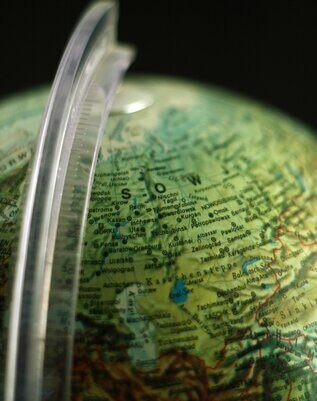
Turbulence in eastern Ukrainian cities – Donetsk and Luhansk
In 2014, another major event occurred that impacted Russo-Ukrainian relations – and this was when Donetsk and Luhansk, in the East, declared independence from Ukraine.
Donetsk and Luhansk have been in conflict with Ukraine since 2014. Approximately one month after Russia’s annexation of Crimea, pro-Russian separatists in Ukraine’s eastern Donbas region took over the cities of Donetsk and Luhansk, and then declared independence from Ukraine. The Ukrainian Army tried to quickly take back the region, but because the pro-Russian separatists had Russian funding and equipment, they were unsuccessful.
In June 2014, the Minsk Protocol was created with the aim of enacting an immediate ceasefire, and ensuring that pro-Russian fighters left Ukrainian territory, which was signed in September that year. However, both sides accused each other of ceasefire violations, and after a short period of time, fighting restarted and the treaty was effectively rendered useless.
The Russian separatists then won a battle at the Donetsk airport, which was seen as a major strategic win, upon which a spokesman of the Donetsk’s People’s Republic officially declared that because of Ukrainian ceasefire violations, they no longer considered the Minsk Protocol as being legitimate.
After more conflict following the Minsk Protocol, on 12 February 2015, a new agreement aimed at a ceasefire was signed by both sides – known as Minsk II. In Minsk II, heavy artillery in the Donbas region was banned, and Russian separatists had to leave Ukraine. This also included propositions about how the Donetsk and Luhansk’s People’s Republics could be incorporated back into Ukraine.
This time, the treaty was much more successful, with skirmishes only occurring from time to time; however, it was criticised for being fragile and too similar to Minsk I.
Escalation in 2021 and where we are today
Although there weren’t any major developments in the next few years, this all changed in 2021.
Russia had begun amassing troops on the Ukrainian border in the spring, and fears began to spread that Russia was preparing for an invasion. But soon Russia withdrew their troops, and everything seemed to be moving back to normal.
However, in January 2022, panic began to spread when it appeared clear that Russia was preparing to invade, after Russian troops had again amassed on the Ukrainian border, this time with even greater numbers, and multiple field hospitals were also erected nearby. Russia dismissed these fears as baseless accusations, and insisted that Russian soldiers were simply completing routine training exercises. Once these exercises had finished, they would move back to their normal stations.
But on 21 February 2022, President Putin declared that Russia now recognised the Donetsk and Luhansk people’s republics as being independent states. He also announced that Russian troops would enter the two regions on “peacekeeping” missions.
On 24 February, President Putin announced the start of a “special military operation” in Ukraine, which was soon followed by explosions being heard in multiple Ukrainian cities. He further stated that the aim of this operation was to “denazify” and “demilitarise” Ukraine, but that he supported the right of the Ukrainian people to self-determination.
This move was a massive escalation of the war that had started in 2014, and although it may appear that this was started by Russia without any justification whatsoever, there were a few factors, which from a Russian point of view, made it necessary to invade. These were mainly to do with NATO expansion, and the discovery of large amounts of natural gas in Ukraine.
One major reason why Russia invaded is likely to prevent Ukraine from joining NATO. And although people may argue that Ukraine joining NATO isn’t any concern to Russia, the reason why the Russian government was eager to avoid this happening was that Russia, and its neighbour Belarus, along with other post-Soviet republics, are part of their own security alliance called the CSTO.
If Ukraine did join NATO, then Belarus would be exposed on three sides to NATO countries, which could increase the risk of a direct confrontation between NATO and the CSTO. However, the main reason why Ukraine joining NATO could bring Russia and the West into direct conflict was because of Article 5 of the North Atlantic Treaty, which stated that an attack on one member state was equal to an attack on all. In the Donbas region, where it often isn’t clear who started a skirmish, the Russian government was worried that Ukraine would invoke Article 5, which would lead to Russia and NATO directly fighting each other.
There was another reason why the Russian government thought it necessary to invade – and this time it was because of oil and gas issues. The Russian economy relies heavily on money received from its oil and gas exports, with it making up around 45% of Russia’s federal budget. Most of the funding for Russia’s military, therefore, comes from the profit received from oil and gas exports, and so it is invaluable for Russia.
However, some time ago, scientists discovered large amounts of gas in Ukraine. The Russian government knew that if Ukraine stopped importing gas from Russia, then it would have dire consequences for the Russian economy.
The oil and gas company Shell then signed a contract with the Ukrainian government worth £6 billion, which was quite problematic for Russia. However, to Russia’s luck, Shell soon terminated its contract because the area where the gas was found in Ukraine was too close to a conflict zone. So Russian exports of gas were safe for now.
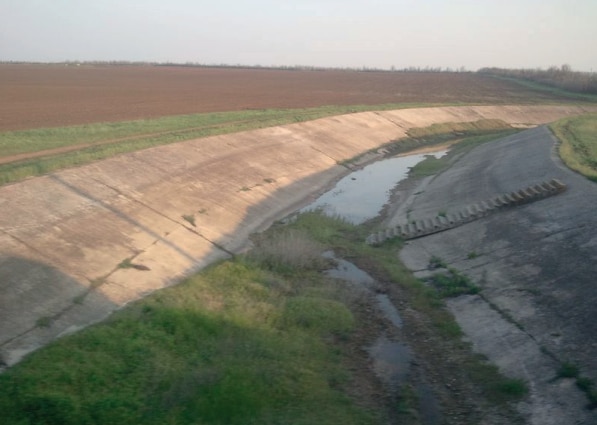
Some have claimed that Russia set up separatists in areas near where large gas reserves were expected to be, but others say that this is simply a coincidence.
In the lead-up to the Russo-Ukrainian war, you will find many instances where both sides committed cruelties and injustices, and it is unfair to point the blame at any single country or figure.
And although we may not be able to stop this war, what we can do is pray that the world’s leaders look past their greed and work peacefully to solve real issues.
As Hazrat Mirza Masroor Ahmad, Khalifatul Masih Vaa stated recently regarding this issue:
“I pray that the world leaders strive earnestly to safeguard and protect mankind, both today and in the future, from the torment of warfare, bloodshed and destruction. And so, from the depths of my heart, I pray that the leaders of the major powers and their governments do not take steps that will serve to destroy the future of our children and the next generations. Rather their every effort and motivation should be to ensure that we bequeath to those that follow us a world of peace and prosperity.
“I pray that all the world’s leaders pay heed to the need of the hour and value, above all else, their obligation to ensure the peace and stability of the world. May Allah the Almighty protect all innocent and defenceless people and may true and lasting peace in the world remain. Ameen.” (“Statement of World Head of the Ahmadiyya Muslim Community Regarding Russia-Ukraine Crisis”, 24 February 2022, pressahmadiyya.com)
Related Content
- World War III: Hazrat Mirza Masroor Ahmad warned for almost two decades, but the world failed to take heed
- Hazrat Mirza Masroor Ahmad, the Ahmadiyya Khalifa had warned the world of Nuclear devastation
- USA, Russia, China, UK and France pledge to avoid nuclear war
- Europe at greatest risk of war in 30 years
- NATO, Russia and Ukraine: Rising tensions and a word of warning from Hazrat Mirza Masroor Ahmad
- Selective empathy: Western media’s horrific double standards amid Russia-Ukraine War
- The conflicts between Iran, Israel and the US
- Disaster in Yemen: Saudi, the West and warnings of Hazrat Mirza Masroor Ahmad (aa)
- Amnesty International: Israel imposes apartheid on Palestinians
- Riots in Kazakhstan and ramifications – Past warnings of Hazrat Khalifatul Masih
- Russia, the West & global catastrophe: We are at “doom’s doorstep” warns Doomsday Clock
- War in Afghanistan: Victory for the weapons industry

